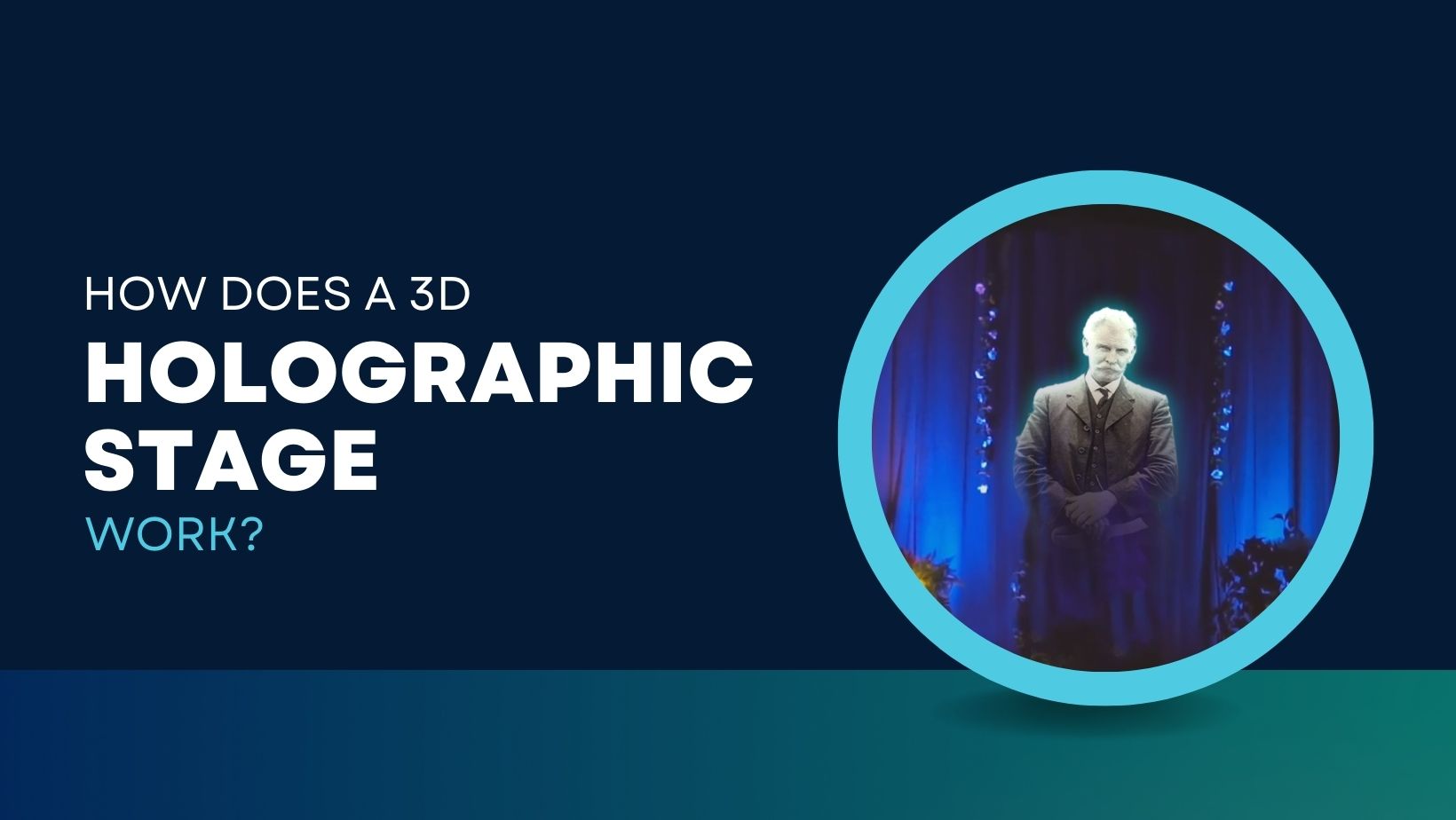While it might seem like magic, the captivating illusion of a 3D holographic stage is achieved through a clever combination of technology and carefully crafted visuals. Compare and choose the most appropriate holographic displays with one of the leading holographic display providers i.e., Vision3D. Here’s a glimpse into how a 3D holographic projection brings seemingly three-dimensional figures and objects to life.
The Essential Ingredients
Holonet (Projection Screen) – This is a transparent, often poly-silk mesh stretched on a frame. It’s specially designed to reflect light efficiently at specific angles, making the projected image appear suspended in mid-air.
Projectors – High-powered projectors emit light beams that carry the carefully designed 2D visuals onto the Holonet. Depending on the size and complexity of the stage, multiple projectors might be used.
Black Background – To create the illusion of a floating image, it’s crucial to eliminate any visual distractions behind the Holonet. A 3D Hologram Projector is often achieved by using a black curtain or other light-absorbing material that seamlessly blends into the background.
The Technical Enchantment
- Content Creation – The magic starts with meticulously crafted 2D content. Unlike true holograms, which require capturing light information from a 3D object and recreating it, 3D holographic stages rely on cleverly designed 2D animations or pre-recorded footage. These visuals are created with special software that takes into account the specific viewing angles and reflective properties of the HoloNet.
- Projection and Reflection – The projector beams the 2D content onto the HoloNet at a specific angle. When light hits the mesh at this precise angle, it reflects at a different angle towards the audience. This controlled reflection is key to creating the illusion of depth and volume.
- Viewing the Illusion – As the reflected light reaches the audience’s eyes, their brains perceive it as coming from behind the Holonet, creating the captivating impression of a three-dimensional object floating in space. A 3D Projection Hologram illusion holds true for viewers within a specific viewing cone, as the reflection angle is crucial for the effect.
Benefits of A 3D Holographic Stage
- Immersive Experience – Offers a highly immersive environment, enabling audiences to feel like they’re part of the action.
- Enhanced visual impact – A 3D Holographic Projection adds depth and realism to performances, presentations, and events, captivating viewers’ attention.
- Versatility – Suitable for various applications such as concerts, product launches, educational presentations, and entertainment events.
- Creative Possibilities – Enables innovative storytelling, incorporating virtual elements seamlessly into live performances or presentations.
- Increased Engagement – Captivates audience interest and encourages interaction with content due to its dynamic nature.
- Cost-Effective Production – Reduces the need for elaborate physical sets and props, potentially lowering production costs in the long run.
- Brand Differentiation – Provides a unique platform for brands to showcase products or messages in a memorable and attention-grabbing manner.
- Scalability – Can be adapted to different venue sizes and configurations, making it suitable for both small-scale and large-scale events.
- Accessibility – Allows remote participation through live-streaming, expanding the audience reach beyond physical attendees.
- Technological Innovation – Demonstrates a commitment to innovation and staying ahead of trends, positioning organizations as industry leaders.
Beyond the Basics
While the core principle relies on controlled light reflection, 3D holographic stages can be further enhanced with additional elements.
- Lighting – Strategically placed lights can dramatically impact the final presentation. They can be used to highlight specific aspects of the projected image, create dramatic shadows, or even conceal the physical setup from the audience’s view.
- Audio Integration – Adding high-quality sound effects and a captivating soundtrack can significantly elevate the immersive experience and complement the visuals on stage.
- Motion Tracking – In some advanced setups, motion tracking technology can be used to allow live performers to interact with a 3D projection hologram in real time, adding another layer of complexity and engagement.
Applications and Limitations
A 3D holographic projection has emerged as a versatile tool for various applications.
- Live Events – They can be used to showcase performers, products, or educational content in a captivating and engaging manner.
- Museums and Exhibitions – Holographic displays can bring historical figures or artifacts to life, creating interactive and educational experiences.
- Retail and Marketing – Businesses can use them to showcase products uniquely and interactively, allowing customers to virtually interact with them.
However, it’s important to remember that the visuals displayed on a 3D holographic stage are still essentially 2D, albeit cleverly manipulated to create a convincing 3D illusion. Additionally, the viewing experience is optimal within a specific cone, meaning viewers outside this area might not perceive the full 3D effect.
Conclusion
Despite these limitations, A 3D hologram projector continues to evolve, offering exciting possibilities for captivating audiences, enhancing presentations, and pushing the boundaries of visual storytelling. To know more about holographic displays, connect with Vision3D customer care number – (+91)-8971953451.
